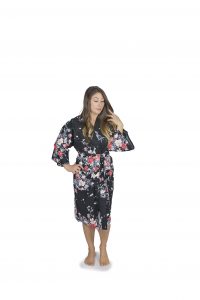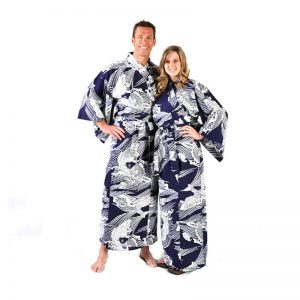Managing Partner, Ron Irving of Chopa.com sat down recently for a live question and answer session at a professional trade show. With the growing popularity of Kimonos and Yukatas across the globe, attendees were very interested in what Mr. Irving had to say. His expertise and management of Chopa have allowed this company to remain a leading provider of authentic Japanese robes to customers everywhere. Excerpts from his interview were previously posted on this site. This is part 3 and the final post.
How do you choose the right kimono for an occasion?
“Kimonos come in a wide variety of styles and purposes. Choosing the right kimono for an occasion can be tricky. But following some basic guidelines can help. The two most common styles of kimonos are formal and casual. Formal kimonos are usually made with long sleeves and are ornately decorated. They are worn for special occasions such as weddings or tea ceremonies. For example, at a Tea Ceremony, you would wear an extremely formal kimono. Whereas for a festival you might choose something colorful and festive.
Casual kimonos are made of lighter-weight fabrics like cotton and cotton-sateen and usually have shorter sleeves. They can be worn for everyday activities such as going to the grocery store or taking a walk. Choose a kimono color that coordinates well with your skin tone and hair color. Black typically works well for everyone, but other colors such as white, red, and blue can also be flattering depending on your complexion.
If you are unsure about the level of formality required for an event, it is always best to overdress rather than underdress. Formal kimonos can be quite expensive. If you are not ready to make that kind of investment then purchase the next level down or what you can afford. I have seen countless situations where a yukata with a colorful and distinctive design outmatched a formal kimono. The cost was a fraction as well.”
Who is your favorite designer of Japanese kimonos?
“If we are speaking historically, when it comes to kimono design, there are few names more iconic than Hiroaki Oikawa. Born in Osaka in 1948, Oikawa is a self-taught artist who first rose to prominence in the 1970s. He created bold and vibrant kimono designs with the use of traditional Japanese motifs combined with modern pop culture references. He helped to redefine kimono design for a new generation. Today, Oikawa is widely considered one of the most important kimono designers in Japan. His work can be found in the permanent collections of several museums around the world. If you’re looking for a truly unique kimono experience, then Hiroaki Oikawa is the designer for you.
Most people, myself included don’t purchase or wear designer kimonos. I prefer more mainstream, made of cotton, easy to care for, and comfortable to wear. A former business partner of mine used to splurge and purchase original designer kimonos to wear. I noticed one day, that he rarely wore them. They became artwork for his walls because they were so special to him. Visiting his house for a dinner party was a treat because guests would stare at them in awe of the beauty, detail, colors, and style. It was like attending a museum with cocktails and great Japanese food he would always serve.
I asked him once about this and he said they were just too special for him to wear. For the amount of money he paid he opted to display them and just admire them. They were certainly worthy of dramatically distinguished wall art. But they reminded me of visiting my grandmother’s house when I was a child. She bought brand new furniture and was always afraid of having anyone sit on it because it might become ruined.”
Where can I buy a good kimono or yukata?
“What can I say? If you’re looking for a kimono or yukata, one great option is Chopa – Your Kimono Source. At Chopa, you’ll find a wide selection of kimonos and yukatas in a variety of colors and styles. Whether you’re looking for a traditional kimono or something more modern, you’re sure to find what you’re looking for. In addition to kimonos and yukatas, Chopa also sells obis and sashes, Tabi socks and other accessories to complete your look.
I became a managing partner in Chopa for my love of the garments, more so than money. Some people will say, yeah, right, but for me it is true. I want other people to fall in love with the heritage, the styles and symbolism Japan has given us. Few things in life give some people such joy, but for me kimonos are as good as it gets.
Like some people love cars, others horses and some prefer sports or photography, I fell in love with kimonos many decades ago and it just gets better everyday. Working in retail will always bring some complaints, but our thank you notes exceed complaints 100 times to one. So if you’re looking for a kimono or yukata, be sure to check out Chopa – They really are Your Kimono Source.”
Thank you Ron Irving.
If you wish to see the fine selection of colorful, beautiful authentic Japanese Kimonos and Yukatas that Ron speaks of, visit their online store.













